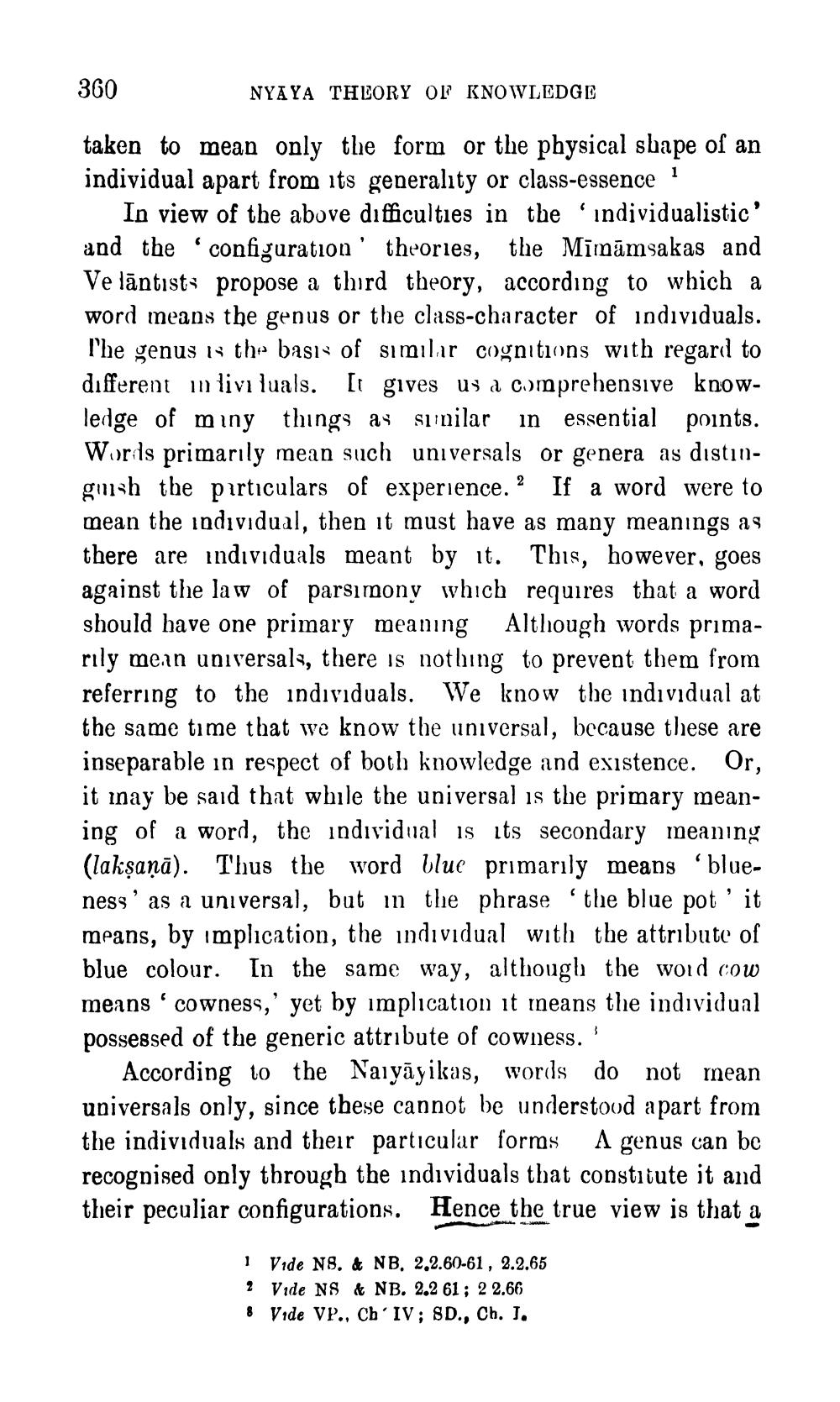________________
360
NYAYA THEORY OF KNOWLEDGE
taken to mean only the form or the physical shape of an individual apart from its generality or class-essence ?
In view of the above difficulties in the individualistic' and the configuration theories, the Mimāmsakas and Ve lāntists propose a third theory, according to which a word means the genus or the class-character of individuals. The genus is the basis of similar cognitions with regard to different in livi luals. It gives us a comprehensive knowledge of miny things as sunilar in essential points. Worils primarily mean such universals or genera as distingmush the particulars of experience. 2 If a word were to mean the individual, then it must have as many meanings as there are individuals meant by it. This, however, goes against the law of parsimony which requires that a word should have one primary meaning Although words primarily mein universals, there is nothing to prevent them from referring to the individuals. We know the individual at the same time that we know the universal, because these are inseparable in respect of both knowledge and existence. Or, it inay be said that while the universal is the primary meaning of a word, the individual is its secondary meaning (lakşaņā). Thus the word blue primarily means 'blueness' as a universal, but in the phrase "the blue pot’it means, by implication, the individual with the attribute of blue colour. In the same way, although the word cow means 'cowness,' yet by implication it means the individual possessed of the generic attribute of cowness."
According to the Naiyāyikas, words do not mean universals only, since these cannot be understood apart from the individuals and their particular formas A genus can be recognised only through the individuals that constitute it and their peculiar configurations. Hence the true view is that a
1 Vide NS. & NB, 2.2.60-61 , 2.2.65 2 Vide NS & NB. 2.2 61 ; 2 2.66 8 Vide VP., Cb'IV; SD., Ch. J.




